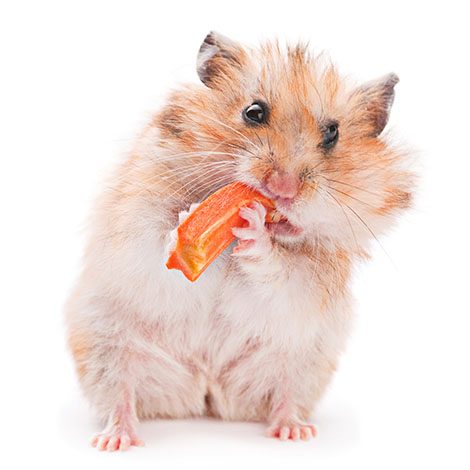Your hamster’s teeth are vital to its survival, as the animals' diet consists mainly of tough, fibrous foods. Check your hamster’s teeth regularly to make sure that they’re in good condition.
The main things to check is the length and shape of your pet’s inciser teeth - the front four, two at the top and two at the bottom, long, yellow-brown, and the defining feature of all the rodent family.
If one of your pet's teeth is shorter than the one next to it, or has grown longer than its neighbor, the short tooth may have been broken. Healthy teeth are of even length. If both teeth are stubby, they may both be broken, in which case the opposite tooth won't have grown into the space where the other tooth should be. If the lengths of the two teeth vary a lot, take your pet to the vet, as the condition might affect your hamster’s ability to eat, or may cause him pain. Blood or scabs around the mouth are another sign that your pet has broken a tooth.

A hamster uses his rodent teeth for tackling tough foods, and generally gnawing and nibbling
The yellowness of a hamster's teeth is nothing to worry about (any many owners do worry unnecessarily about this). Younger hamsters have pale teeth that become darker over time, becoming yellow as the animal matures. In fact, If an older hamster’s teeth suddenly turn white, then there may actually be an underlying health problem.
To help keep your hamster’s teeth in good condition, provide chews. These should be made of wood that’s safe for hamsters to chew. They help your pet wear his teeth down just as he would in the wild - remember, like all rodents, hamsters' teeth grow constantly throughout their lifetime. So, provide a chew, and your hamster will have what he needs to regulate his tooth length.
Comments
There are no comments just yet